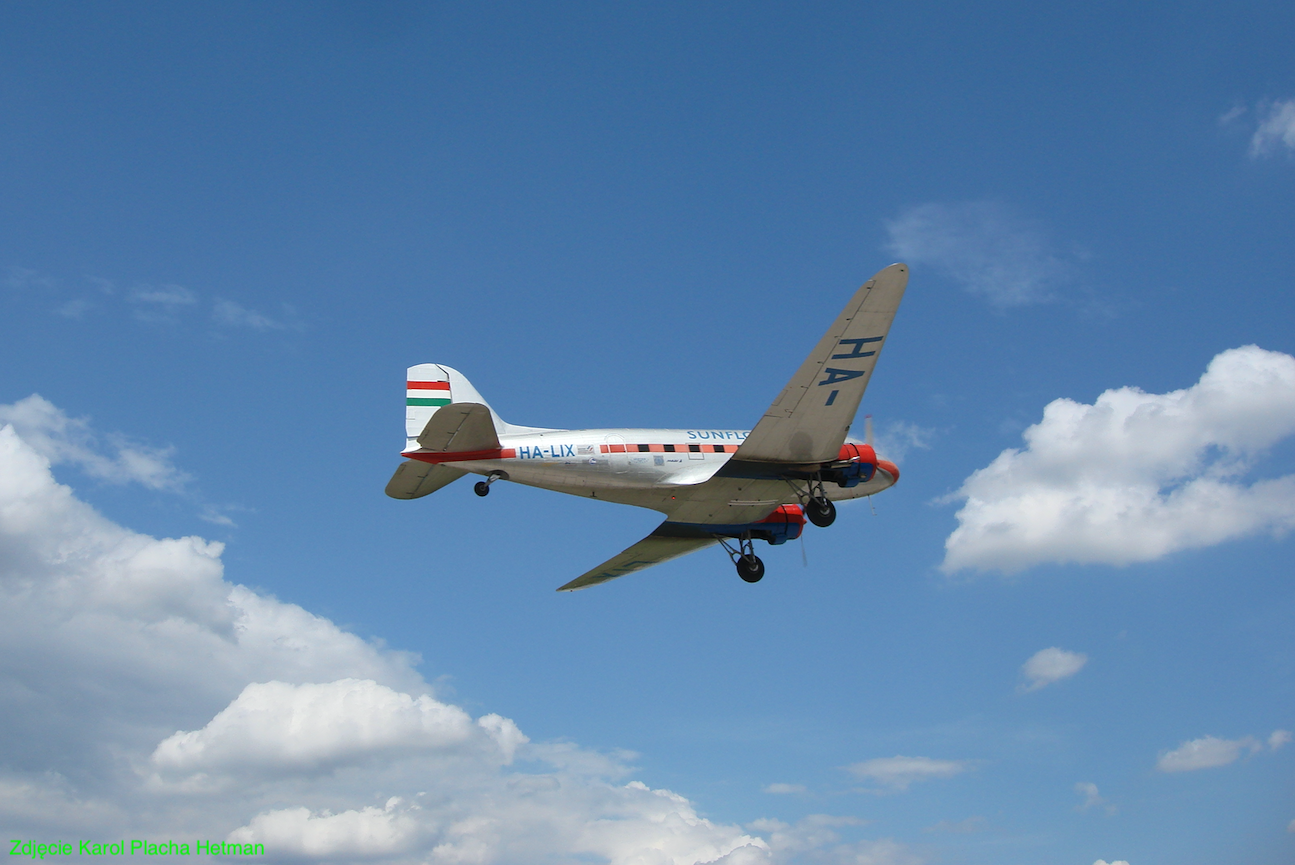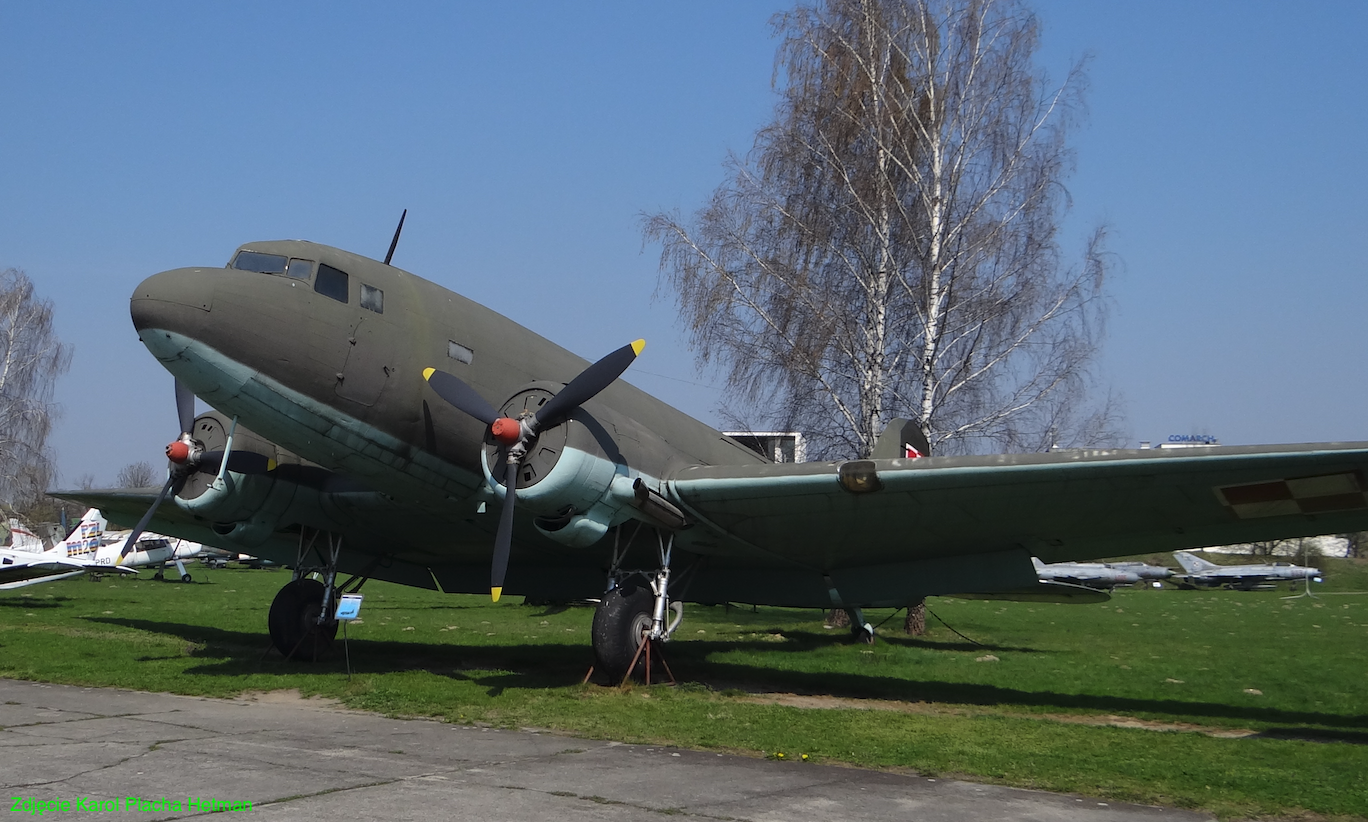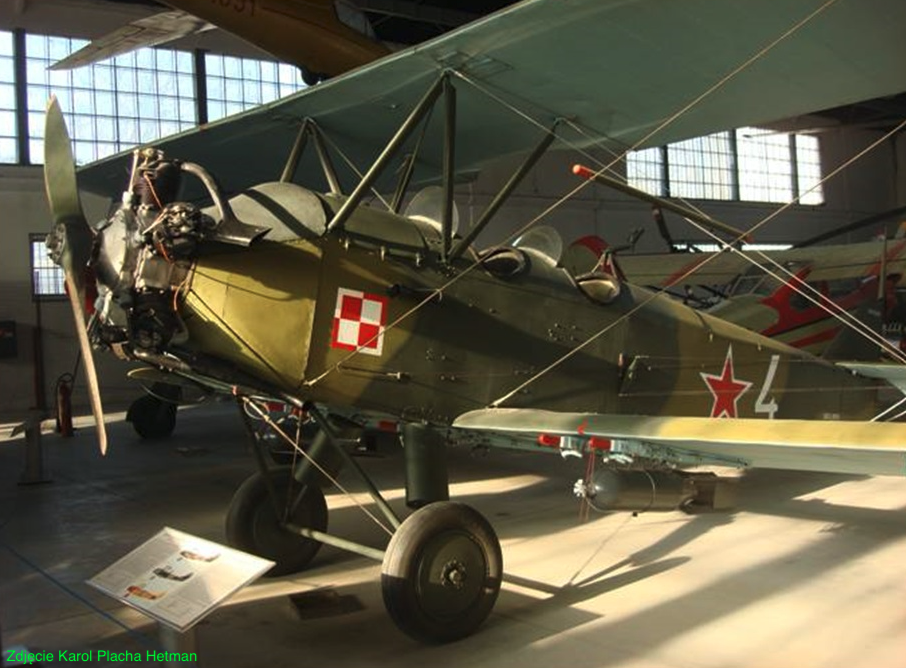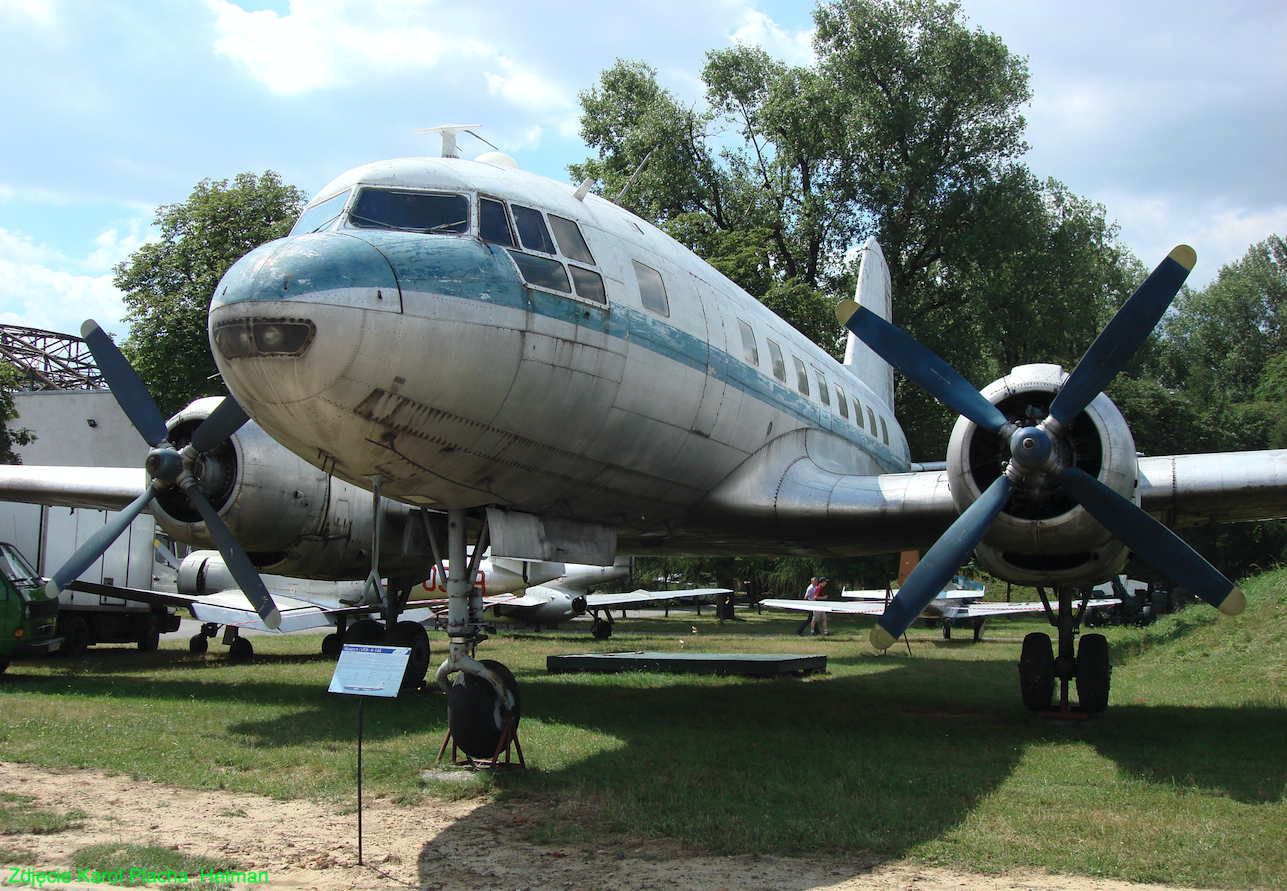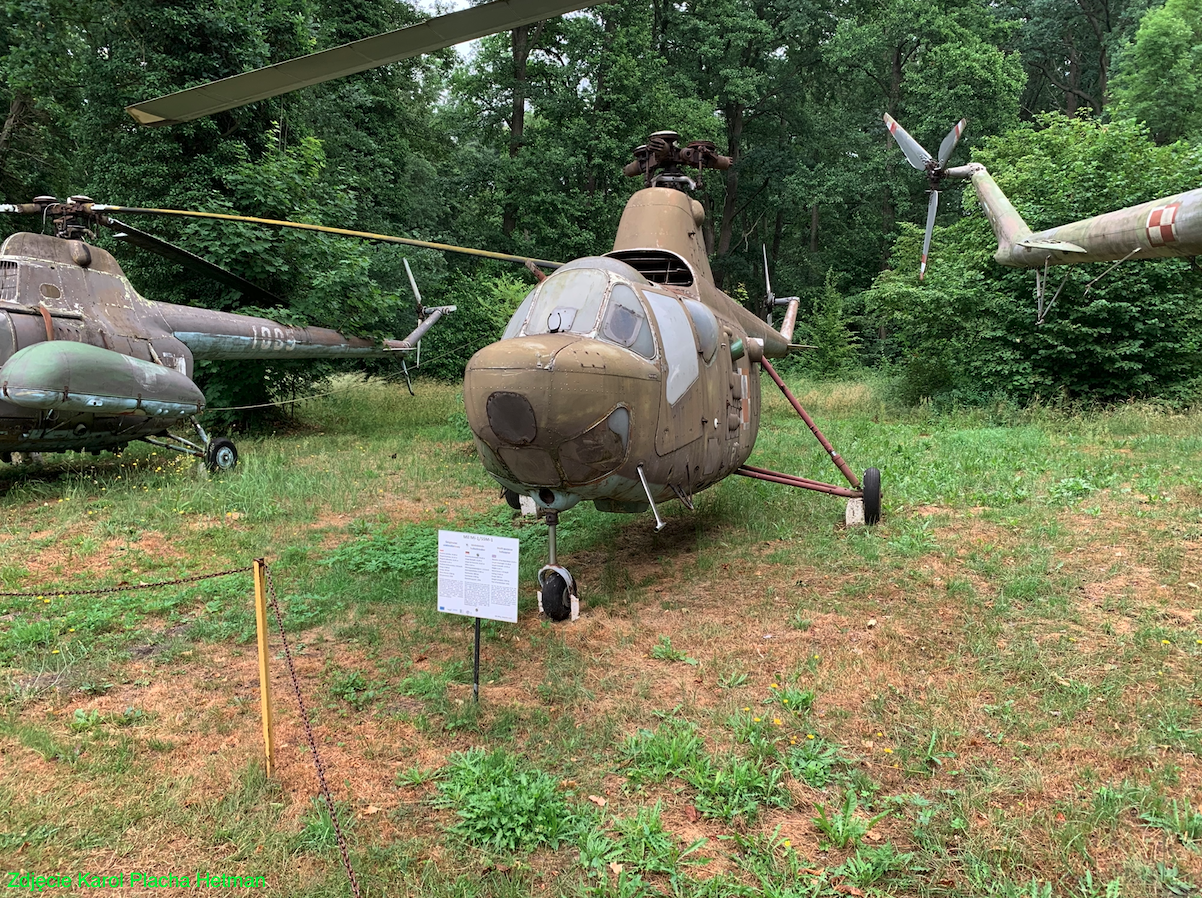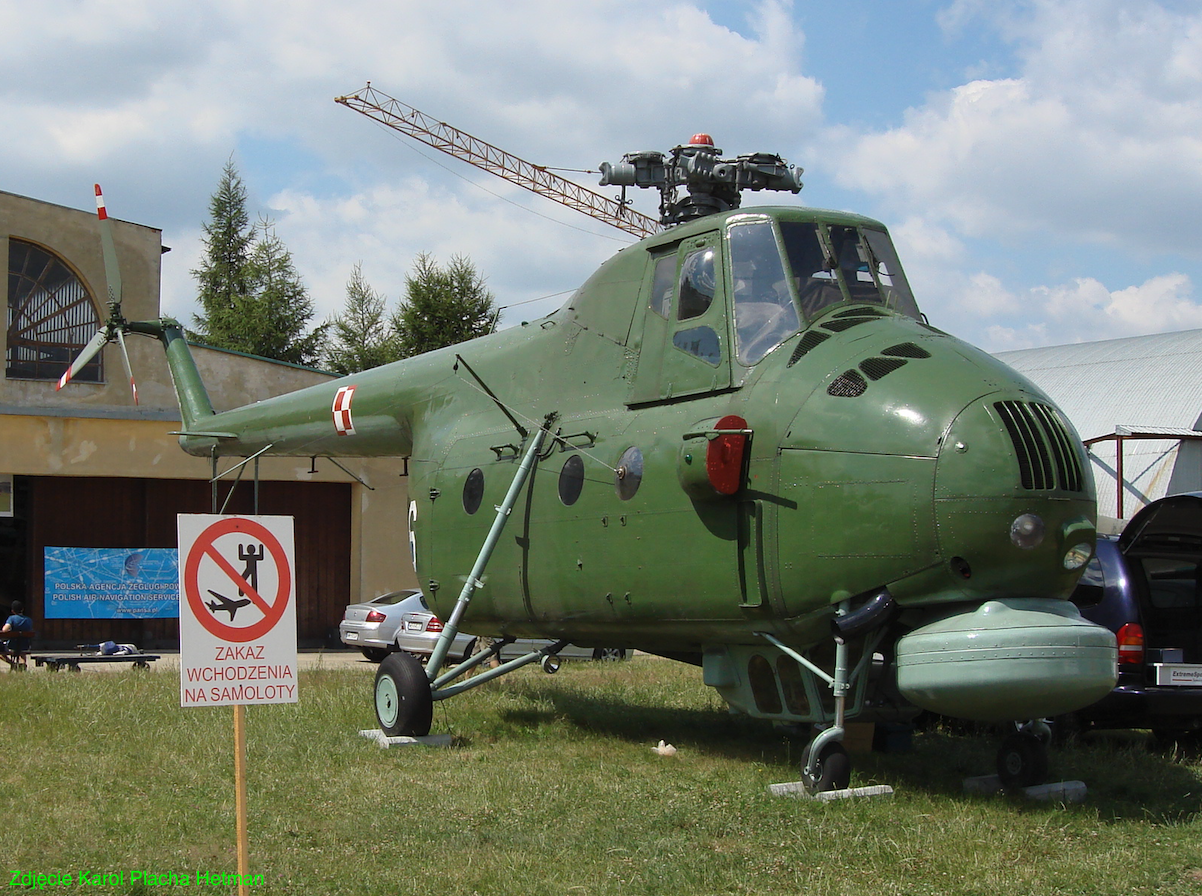Warszawa 2014-03-20
103rd Aviation Regiment of the Ministry of Internal Affairs in Warsaw.
1944 – 2001.
The rise of the Internal Troops.
It is impossible to explain the existence of special units in the Polish People’s Republic (PRL), with a typical military formation, which were not part of the structures of the Polish Army, without presenting the history since 1944.
In order to introduce a communist-style social order in Poland, dependent on Moscow, the communists had to prepare well. The general outline was created already in 1943. In the fall of 1944, after the collapse of the Warsaw Uprising and the failure of Stanisław Mikołajczyk’s talks with dictator Stalin in Moscow, the Kremlin decided to tighten the PKWN policy in the areas occupied by Soviet troops. Then practically to the line of the Vistula River. It was then that the decision was made to establish the Internal Troops as a special military formation operating within the Ministry of Public Security of the Polish Committee of National Liberation.
The basis for creating a new type of troops was the Independent Assault Battalion, formed on October 18, 1943, which on March 21, 1944 was transformed into the Polish Independent Special Battalion. It was the first unit of the Internal Troops. The battalion was directly subordinated to the national department of the Union of Polish Patriots (Communists). In 1944, the battalion was subordinated to the Central Office of Polish Communists, and then temporarily to the Polish Partisan Staff. On October 20, 1944, the Independent Prisoners of War Protection Battalion was incorporated into the battalion. Both battalions gave rise to the 1st Internal Troops Brigade. Later, two more brigades were established, numbered 2 and 3. The task of the brigades was the armed liquidation of all structures and organizations of the Polish Underground State, through arrest, abuse and murder.
At a time when the entire pre-war Poland was already freed from Germanic troops, on March 26, 1945, the Provisional Government adopted a resolution to establish KBW, i.e. the Public Security Corps. The resolution ordered the Minister of Public Security, Stanisław Radkiewicz, to form the Internal Security Corps by May 1, 1945. The set date could not be met due to numerous desertions of soldiers from the newly formed KBW units. Only in April-May 1945, about 800 soldiers deserted. On April 23, 1945, the entire 2nd Independent Operational Battalion of the Internal Troops from Lubaczów deserted, and on April 27, 1945, the 2nd Battalion of the 1st Internal Troops Brigade from Sokołów Górny deserted. On May 1, 1945, the Independent Operational Battalion of the 3rd Internal Troops Brigade from Biłgoraj deserted.
Faced with the situation, the Provisional Government, on May 24, 1945, ordered the formation of a corps to the Minister of National Defense. The 4th Infantry Division was separated from the Polish Army as the basis for organizing the KBW. The current commander of the 4th Infantry Division, Gen. Bolesław Kieniewicz, became the head of the KBW. The base for forming KBW, in addition to the 4th Infantry Division, included: the corps command, two barrier brigades, ten cavalry regiments, five independent security battalions, an independent communications battalion, and other units in the initial stage of organization. The communists could afford it because even before the capitulation of German troops, Polish units created in the East were ordered to return to the country. The process of establishing KBW lasted until August 22, 1945, i.e. until the unit was transferred by the Ministry of National Defense to the Ministry of Public Security (MBP). At the end of 1945, KBW had 29,000 soldiers, in 1950 – 41,000, in 1956 – 25,000, and in 1961 – 25,500 soldiers.
Between September and October 1945, another reorganization took place. Among other things, Internal Security Forces were established in each voivodeship, which were the command bodies of the KBW troops on a territorial scale. Operational units were also established, divided into battalions, located in each voivodeship. At this time, special centers and units were also created; KBW Officer School, Motorized Regiments, Communications and Aviation Squadron, KBW Prosecutor’s Office and Courts. This allowed for the intensification of the activities of the Corps and its subordinate units throughout the country. This organizational structure of the KBW units ensured considerable independence in managing the units, thus enabling a more effective fight against the Polish Underground and the implementation of protection and convoy tasks.
1946 year.
From the beginning of 1946, KBW units operated systematically and on a large scale. Raids, provocations, detentions and searches were organized. All this was carried out under the leadership of the Office of Public Security. KBW units protected the organs of people’s power located in liberated Poland. KBW troops also secured the protection of more important industrial facilities and communication routes.
From March 1946, local KBW units, together with the UB (security office), MO (citizens’ militia), and ORMO (citizens’ volunteer militia reserve), were subordinated to provincial security commissions subordinated to the State Security Commission.
KBW was established to fight the anti-communist underground, which included the Home Army, the National Armed Forces, WiN and other Polish armed underground organizations. KBW also fought against Ukrainian UPA and OUN units and the Germanic Werwolf. KBW units pacified villages that supported underground anti-communist units. They supported the falsification of the 1946 referendum. They protected the elections to the Legislative Sejm in 1947. They conducted propaganda and disinformation campaigns in order to discredit the Polish People’s Party. Between March 1945 and April 1947, KBW units killed approximately 2,000 soldiers of the Home Army, NSZ and other anti-communist units. They injured 301 people, took 12,200 people prisoner, and arrested about 300 people who supported the underground. A further 13,000 people were accused and brought to justice. KBW losses amounted to approximately 500 soldiers.
1947 year.
In 1947, KBW units were proud of their military and resettlement operations in the Bieszczady Mountains; Operation "Vistula". KBW units ran forced labor, solitary confinement and internment camps. They constantly cooperated with Soviet NKVD units.
The main area of fighting for KBW troops were rural areas, mainly in the south-eastern regions of the country, especially in the Białystok, Warsaw, Lublin and Kraków voivodeships. By the winter of 1947, KBW, as the basic first-line military force, supported by units of security organs, led to the destruction of such large partisan groups as "Bury" – April 1946, "Orlik" – June 1946, "Bartka" – autumn 1946 year. From the spring of 1947, KBW troops intensified their activities against UPA units, both as part of the "Vistula" operation in April-July 1947, and during the final clearing of the south-eastern areas of the country of UPA remnants. At that time, the activities of the National Security Bureau were closely coordinated by the Provincial Security Committees of the Public Security Office, the Militia, and units of the Ministry of National Defense. At the central level, the most important actions against the post-AK underground were led by the State Security Commission, chaired by the Supreme Commander of the Polish Army, Marshal Michał Rola-Żymierski.
1948 year.
Already at the end of 1947, KBW units specialized in combating the remnants of the armed underground, organizing and performing protection and convoy services. The primary goal was the complete liquidation of the armed underground. However, it lasted until 1948, although later small local anti-communist groups were still active. Later, there was every underground movement and opposition to the people’s government.
KBW’s activities have evolved. New methods were used; deep surveillance, reconnaissance, ambushes, provocations and pursuits. Many of these actions ended in KBW failure. Therefore, KBW combined its efforts with the Citizens’ Militia, the Office of Public Security and units of the Polish Army, and above all, the NKVD. Cooperation with units of the Polish Army was particularly poor, due to conscript soldiers’ sympathies with the underground.
1949 year.
By 1949, the apparatus of communist oppression managed to liquidate the main structures of the Independence Underground. However, the fight against new forms of anti-communist activity became increasingly difficult. The rifle was no longer enough. Despite appearances, the structureless underground remained very strong due to its concentration around the Catholic Church. Therefore, the authorities considered reducing the number of KBW branches. This did not happen because the communists from the upper echelons of the KBW were unable to do anything else and were unsuitable for normal work in civilian clothes. Therefore, in order to save the face of KBW, their units began to take part in eliminating natural disasters, fighting large fires, building roads (for example in the Bieszczady Mountains), building schools and others.
Until 1954, KBW was subordinated to the Minister of Public Security and then to the Minister of Internal Affairs. In 1955, KBW units took part in an anti-balloon operation, when leaflets were dropped over Poland on the initiative of Radio Free Europe. In 1956, KBW units pacified the Poznań Uprising.
1961 year.
Status of the KBW as of September 29, 1961: Command and staff. Political Board. Chiefs of: Automotive Service, Artillery and Armored Weapons, Chemical Service, Engineering Troops. Security subunits: communications battalion (Warsaw), radio communications company, car company, security company, reserve depot. Liaison and Transport Aviation Squadron (Bemowo Airport). Government Protection Brigade (Warsaw). 1st Mazovian KBW Brigade (Góra Kalwaria). 2nd Podlasie KBW Brigade (Białystok). 5th KBW Brigade of the Krakow Land (Kraków, Wadowice. They appropriated the glorious history of the Podhale people. They were proud of the liquidation of the unit of Major Józef Kuraś "Ogień"). 3rd KBW Regiment (Lublin). 6th KBW Regiment (Katowice). 7th KBW Regiment. 10th Greater Poland KBW Regiment (Poznań). 11th Lower Silesian KBW Regiment (Wrocław Jelenia Góra). 12th KBW Regiment of the Szczecin Land (Szczecin). 13th Kashubian KBW Regiment (Gdańsk). 15th KBW Regiment of the Opole Region (Prudnik Opole). 9th Pomeranian Pontoon and Bridge Regiment (Bydgoszcz). 10th Pontoon and Bridge Battalion (Rawicz). 12th Pontoon and Bridge Battalion (Szczecin). 16th Pontoon and Bridge Battalion (Koszalin). 1st Engineering Battalion (Warsaw). 2nd Engineering Battalion (Grajewo). 4th Engineering Battalion (Rzeszów). 6th Engineering Battalion (Lubliniec). 11th Engineering Battalion (Jelenia Góra). School car regiment (Łódź). The regiment has been formed. Light armored regiment. Fire Service (Poznań). Fire Service (Szczecin). Fire Service (Kraków). Fire Service (Bydgoszcz).
KBW schools; KBW Officer School (Gdańsk 1954-55, Czerwieńsk near Zielona Góra 1955-56), Training Center (Legnica, run by Muscovites), Signal Non-Commissioned Officers School (Prudnik), KBW Engineering Troops Training Center (Pułtusk).
KBW soldiers had a green (khaki) uniform. Green, round hats with a navy blue rim. This costume was also used in the troops of the Ministry of Internal Affairs.
1965 year.
The PZPR leadership decided that the socialist system had already been stabilized in Poland. The armed underground was completely liquidated. Additionally, the economic situation did not improve. In order to save money, it was decided to liquidate KBW. Although in reality there was only a reformation.
In accordance with the Prime Minister’s order of June 24, 1965, the National Security Service was transformed into the Internal Defense Forces and began to serve as part of the National Territorial Defense system. In fact, they were transferred to the Ministry of National Defense. Some of the former KBW units were incorporated into the newly established Vistula Military Units of the Ministry of Internal Affairs (Ministry of Internal Affairs).
Subsequent name changes: Nadwiślańskie Military Units of the Ministry of Internal Affairs named after Thursdays AL, operated in the period 1965-1974. Nadwiślańska Brigade of the Ministry of Internal Affairs named after Thursdays AL, operated in the period 1974-1990. The Vistula Military Units of the Ministry of Internal Affairs and Administration operated in the period 1990-2001.
1966 year.
Since 1966, the Vistula Military Units of the Ministry of Internal Affairs have operated. (in the period 1997-2002, as the Vistula Military Units of the Ministry of Internal Affairs and Administration). They continued the activities of KBW. In 2002, they were disbanded.
The Vistula River units were located in several parts of the country (Bieszczady, Silesia, Warmia). In Warsaw at ul. Podchorążych 38 (including the Command of the Vistula Military Units, Military Unit No. 2610).
1981 year.
During martial law in Poland, units of the Ministry of Internal Affairs together with ZOMO (militarized citizen militia units) were the armed arm of General Wojciech Jaruzelski. They were used to take over RTV facilities as part of Operation Azalia.
1992 year.
In 1992, the forces of the Ministry of Internal Affairs included: security, anti-terrorist and communications units, the 103rd Transport Aviation Regiment and security, protection and command units. Composition of the Vistula Military Units of the Ministry of Internal Affairs: Command of the Vistula Military Units – Warsaw. 1st Warsaw Motorized Brigade (JW 2610) – Warsaw. 6th Motorized Brigade – Katowice. 20th Kielce Land Communications Brigade (JW 3417) – Kielce – subordinated since January 1, 1992. 1st Masovian Protection Regiment (JW 4829) – Góra Kalwaria – subordinated since January 1, 1992. 4th Bieszczady Motorized Regiment (4th Protection Regiment); (JW 2667) – Sanok. 14th Masurian Protection Regiment (JW 2839) – Olsztyn – subordinated since January 1, 1992. 2nd Security Regiment (from January 1, 1993) (JW 3466) – Czerwony Bór – previously a security battalion – subordinated to NJW from January 1, 1992. 3rd Engineering Security Regiment (JW 2621) – Legionowo, Piaseczno and Warszawa-Szczęśliwice, then from 1994, Warszawa-Bemowo. 7th Signal Regiment (JW 1060) – Emów near Warsaw. 7th Command Regiment (JW 2909) – Emów near Warsaw – formed on the basis of the 7th Regiment, currently the Central Training Center of the Internal Security Agency. 103rd Liaison Aviation Regiment (JW 1159) – Warszawa-Bemowo ul. Kocjana 3. Special Facilities Security Branch (WOW Control Positions Security Branch) – Warsaw – subordinated since January 1, 1992. Military Training Center (JW 2501) – Raducz Central Training Center NJW (JW 1492) – Katowice then Raducz. Independent Military Police Unit of the Vistula River Units of the Ministry of Internal Affairs – Emów, then Warsaw (JW 2780). 112th Security Battalion (JW 1076) – Linin – subordinated since January 1, 1992. Technical and Material Depot (JW 2804) – Linin. Independent Repair Station – Warsaw-Bemowo. Radio Center (JW 2861) – Warsaw. Central Ammunition Depot (JW 1774) – Stara Wieś. 9th Independent Supply and Service Battalion of the NJW Command of the Ministry of Internal Affairs (JW 2102) – Warsaw. 7th Independent Engineering Battalion (JW 1917) – Warsaw, ul. Kocjana 3.
1995 year.
Since 1995, units of the Ministry of Internal Affairs have taken over the tasks of protecting government facilities and diplomatic missions. It included security, anti-terrorism and communications units, as well as a transport aviation regiment.
2002 year.
The troops of the Ministry of Internal Affairs were disbanded. Some of their tasks were taken over by the Government Protection Bureau (BOR).
Transport and Liaison Aviation Squadron of the Ministry of Internal Affairs.
103rd Aviation Regiment of the Ministry of Internal Affairs.
103rd Aviation Regiment (JW 1159) – Warszawa-Bemowo (ul. Kocjana 3) and Bielany (Wrzeciono, ul. Marymoncka).
Bemowo Airport, like no other airport in the country, was strongly associated with broadly understood internal public order. Air units subordinated to the public administration were stationed here. From the very beginning, an aviation unit subordinated to the Internal Security Corps was based here. This unit had Li-2 and Po-2 transport aircraft.
Certainly, Lisunow Li-2 planes were used by the KBW Squadron. It is highly probable that KBW also used DC-3 planes. In 1946, 9 DC-3 planes were purchased from surplus for LOT Polish Airlines. These planes were used to transport state parcels, important people from the communist apparatus, as well as special prisoners, such as; Cardinal Stefan Wyszyński.
The Polikarpov Po-2 plane is the plane that helped the communists consolidate power in the Polish People’s Republic. In 1950, the regiment adopted the first Ilyushin Il-12 aircraft. The Il-12 transport aircraft was the successor to the Li-2 aircraft. In 1949, Poland bought the first 5 Il-12 aircraft. In 1950, two planes were purchased for the army; one Ił-12 B nb 002 intended for transporting important persons, possibly cargo, and one Ił-12 D nb 001 transport and landing vehicle. This machine was intended for service in KBW.
The Il-14 aircraft was the successor to the Il-12 machine. Il-14 planes were used by LOT Polish Airlines, the 36th SPLT and the 103rd Aviation Regiment of the Ministry of Internal Affairs. The first machines came to Poland in 1955. The planes were manufactured in; CCCP, GDR and Czechoslovakia.
The Bemowo airport was very important for the implementation of permanent and ad hoc tasks performed by KBW, which required the use of planes and helicopters. Currently, it is difficult to determine which planes and helicopters were permanently based at Bemowo Airport, as part of the Transport and Liaison Aviation Squadron of the Ministry of the Interior, and later the 103rd Aviation Regiment. One of the problems was the replacement of equipment from the 36th SPLT from Okęcie, as well as from other air units scattered around the country.
Certainly, the first Mi-1 helicopters imported to Poland, and then Mi-4, were based at Bemowo Airport. The fact that helicopters were used in a militia mission in 1965 is well known, when two Mi-4 and two SM-1 helicopters of the Transport and Liaison Aviation Squadron of the Ministry of Internal Affairs were launched for the first time in order to search for criminals who had escaped from the prison in Krosno. Regardless of the search, leaflets with police messages were scattered along the probable escape route of the convicts. This fact is reported as the first operational use of helicopters subordinated to the Ministry of Internal Affairs.
Preparations for the production of the Mi-1 helicopter in Poland at WSK Świdnik began in 1954. The helicopter was designated SM-1. The first machines were flown in 1956. Also this year, Mi-1/SM-1 helicopters became part of the army’s equipment. In KBW, the connecting and passenger version was mainly used. In the 1960s, radio coverage of the "Pokoju" cycling race was carried out from the deck of the SM-1 helicopter.
In 1958, Mi-4 helicopters were adopted as part of the Polish Military Aviation. The first public demonstration of these machines took place in Warsaw at the 10th Anniversary Stadium, on the occasion of the Aviation Days and the Central Harvest Festival.
In 1961, the KBW Aviation Squadron adopted the SM-2 helicopter, which is a development version of the SM-1. The enlarged cabin has room for 5 people. The range with an additional fuel tank was 500 km.
1965 year.
Around 1965, the Transport and Liaison Aviation Squadron of the Ministry of the Interior was transformed into the 103rd Aviation Regiment of the Vistula Military Units of the Ministry of the Interior.
There was then a new division of equipment between the 36th SPLT and the 103rd Regiment of the Ministry of Internal Affairs. The 36th SPLT had only planes in stock, while the 103rd Regiment of the Ministry of Internal Affairs took over only helicopters. Their number was supplemented by being equipped with, among others, Mi-2 helicopters. PZL Mi-2 is a Soviet-designed helicopter, but its serial production was not carried out in the CCCP country. In January 1964, an agreement was signed between Poland and CCCP and in 1965, the first Mi-2s rolled off the PZL Świdnik production line. In 1966, Mi-2s became part of the equipment of the 103rd Regiment.
The number of tasks performed for the Ministry of Internal Affairs increased. At that time, no distinction was made between militia and internal tasks. Many remember the famous cycling race "Peace Race" in the 1970s, which was broadcast live from the Mi-2 helicopter. However, few people know that the creation of this type of military helicopter was born with the aim of aerial reconnaissance of the enemy. Initially using a film camera, and then via online transmission to the command point. The communist authorities quickly noticed the possibility of using this technique to pacify strikes, riots, illegal marches and similar "hostile" actions. The coverage of the "Peace Race" was only an episode, to the delight of the fans.
In 1968, the Polish Army adopted Mi-8 helicopters. Initially, they were used as a means of transport, but soon (due to their high load capacity) they performed tasks as flying cranes. Since 1977, the 103rd Aviation Regiment of the Ministry of Internal Affairs has adopted Mi-8 helicopters. There were 21 of them, most of them in the Mi-8 T version. There were also variants of the Mi-8 salonka (disposable). On June 2-10, 1979, Pope Saint John Paul II came to Poland with his first pilgrimage. Therefore, several (4-6) Mi-8 helicopters were repainted white and had PLL LOT symbols on them, although the machines still had military side numbers. John Paul II traveled between individual pilgrimage cities (places) in these helicopters. The helicopter crews were pilots from the 103rd Regiment of the Ministry of Internal Affairs. It was similar during subsequent pilgrimages of Saint John Paul II to Poland. In 1989, the 103rd Aviation Regiment of the Ministry of Internal Affairs adopted four Mi-17 helicopters. The Mi-17 machine is a development version of the Mi-8 helicopter.
In 1991, the 103rd Aviation Regiment of the Ministry of Internal Affairs was a very strong unit. It had 39 helicopters; 15 Mi-8 T, 3 Mi-8 S, 4 Mi-17, 12 Mi-2, 4 W-3 Sokół, 2 Bell 206.
Until 1995, the 103rd Aviation Regiment of the Ministry of Internal Affairs independently secured all aviation activities in the ministry, also performing full police tasks. In 1995, local Police aviation centers began to be established in Kraków and Poznań. In 2001, the 103rd Aviation Regiment of the Ministry of Internal Affairs was disbanded. Its equipment was distributed to land forces and police units, which took over as many as 11 machines. Police aviation officially inaugurated its operations on May 9, 2001. Bemowo Airport remains the seat of the Aviation Department of ZL KGP in Warsaw. They were permanently based here; 3 Mi-8 helicopters, two PZL W-3 Sokół helicopters and one Bell-206.
Commanders of the 103rd Aviation Regiment of the Ministry of Internal Affairs:
Col./Gen. brig. Jan Siuchniński (1965-1983). Col. Wiktor Filipek (1983-1985). Brig. Gen. Edward Wejner (1985 – until April 1992). Col. Dipl. pilot Józef Pęcko (from April 31 to August 31, 1992). Rear Adm./Vice Adm. Marek Toczek (from 1992 to 1995). Brig. Gen. Bronisław Młodziejowski (1996–2000). Col. Dipl. Damian Jakubowski (2000 – 2001).
Written by Karol Placha Hetman

